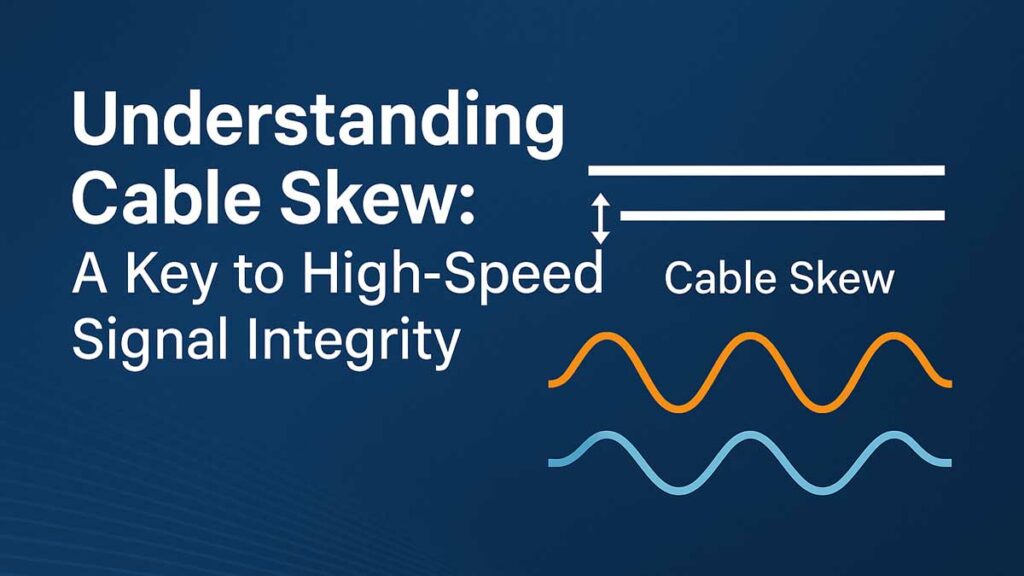As the demand for faster data transmission intensifies, engineers must confront an often-overlooked challenge—cable skew.
In high-speed digital systems, even the slightest delay mismatch between signals can degrade performance. This article explores what cable skew is, the types and causes, and why mastering it is crucial for next-gen technologies.
What Is Cable Skew?
Cable skew refers to the timing difference between signals traveling through a cable assembly, particularly in differential signaling applications. It’s most commonly caused by physical length mismatches or asymmetries in the cable’s geometry.
- Intrapair skew: Mismatch between the two conductors of a single differential pair
- Interpair skew: Mismatch between separate differential pairs
Both impact performance, but intrapair skew is especially critical as data rates climb to 224 Gbps and beyond.
Types of Cable Construction and Their Effects
cables are categorized based on their shielding and conductor configuration:
| Cable Type | Description | Use Case | Skew Behavior |
|---|---|---|---|
| Coaxial | One center conductor within a shield | Precision RF testing | Constant skew, frequency-independent |
| Twinaxial | Two conductors for differential signaling | High-speed digital applications | Coupling-dependent, frequency-sensitive |
Twinax cables have a high coupling coefficient, which improves skew at higher frequencies but amplifies the impact of asymmetry and bending.
How Manufacturing Impacts Skew
Several factors contribute to a cable’s skew performance:
- Geometry symmetry: Imperfections introduce frequency-dependent skew
- Material selection: Impacts flexibility and signal behavior
- Construction techniques: Co-extrusion of conductors yields best-in-class results
Why Skew Matters
In differential signaling, data integrity hinges on signals arriving synchronously and symmetrically. Poor skew control can lead to:
- Data loss or corruption
- Increased error rates
- Reduced system efficiency
Understanding and controlling skew at both the cable and assembly level ensures optimal performance in applications from AI to data centers.
